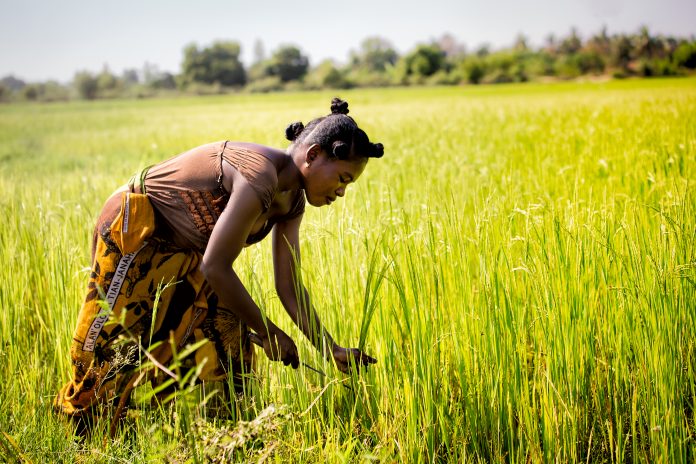Croplands relocation could restore habitats and lessen carbon emissions, if major food crops were moved to minimise environmental impact
Scientists at the University of Cambridge have developed a map highlighting where the world’s major food crops should be grown to maximise yield and minimise environmental impact.
This croplands relocation could capture large amounts of carbon, increase biodiversity, restore habitats which were lost to agricultural practises – and cut agricultural use of freshwater to zero.
As of now, agriculture and land use directly accounts for 18.4% of greenhouse gas emissions globally. This industry has a huge carbon footprint, needing masses of water, soil, and land for animal cultivation – it also degrades many habitats and often results in mass burning of fields once they’ve been used.
Changing where agriculture is practised can minimise environmental damage, carbon emissions and climate consequences which could hinder food production in the future.
These agricultural maps created include large new farming areas for many major crops around the cornbelt in the mid-western US, and below the Sahara desert, as well as huge areas of farmland in Europe and India which would be restored to natural habitat if they were redesigned in a more environmentally-conscious structure.
Optimistically, this redesign could limit impact of crop production on the world’s biodiversity by 87%.
Growing crops in places where rainfall provides all the water necessary to grow
The study, published in the journal Nature Communications Earth & Environment, involves a redesign which uses high-input, mechanised farming to cut the carbon impact of global croplands by 71%.
Using maps across the world based on the current growing areas of 25 major crops – including wheat, barley and soybean – to account for over three quarters of croplands worldwide, they developed a mathematical model to look at all possible ways to distribute this cropland across the globe, while maintaining overall production levels for each crop.
This allowed them to identify the option with the lowest environmental impact of a cropland relocation and redesign.
This would ideally happen by allowing land to revert to its natural, forested state, growing crops in areas which are better suited to those crops – such as lands with lots of rain to grow crops which need lots of water, to not use unnecessary or limited water.
This would drastically reduce the extinction risk for many species, for which agriculture is a major threat, also, croplands could quickly revert back to their natural state, allowing recovery to their original carbon stocks and biodiversity within the first few decades.
Additionally, the redesign would eliminate the need for irrigation altogether, by growing crops in places where rainfall provides all the water they need to grow. Agriculture is currently responsible for around 70% of global freshwater use, and this causes drinking water shortages in many drier parts of the world.
Finally, as trees capture carbon as they grow, enabling more carbon to be captured by the soil than when crops are grown in it.
The equivalent of capturing twenty years’ worth of current net CO2 emissions
Dr Robert Beyer, formerly a researcher in the University of Cambridge’s Department of Zoology, said: “In many places, cropland has replaced natural habitat that contained a lot of carbon and biodiversity – and crops don’t even grow very well there. If we let these places regenerate, and moved production to better suited areas, we would see environmental benefits very quickly.”
“It’s currently not realistic to implement this whole redesign. But even if we only relocated a fraction of the world’s cropland, focusing on the places that are least efficient for growing crops, the environmental benefits would be tremendous.”
Professor Andrea Manica in the Department of Zoology at the University of Cambridge, senior author of the paper, added: “Optimal cropping locations are no moving target. Areas where environmental footprints would be low, and crop yields high, for the current climate will largely remain optimal in the future.”
The researchers acknowledge that relocating cropland must be done in a way that is acceptable to the people it affects, both economically and socially. They cite examples of set-aside schemes that give farmers financial incentives to retire part of their land for environmental benefit.
The model generated alternative global distribution maps depending on the way the land is farmed – ranging from advanced, fully mechanised production with high-yielding crop varieties and optimum fertiliser and pesticide application, through to traditional subsistence-based organic farming.
From this, they found that even redistribution of less intensive farming practices to optimal locations would substantially reduce their carbon emissions and biodiversity impacts.
Though a complete global relocation of cropland is not currently an affordable or realistic scenario that could currently be put into practice, the researchers state that their models display places were croplands are currently very unproductive, but have potential to be hotspots for biodiversity and carbon storage.
They suggest that for limiting carbon emissions sooner, a more realistic option of only relocating the worst-offending 25% of croplands nationally could also result in half of the benefits of optimally moving all croplands.











